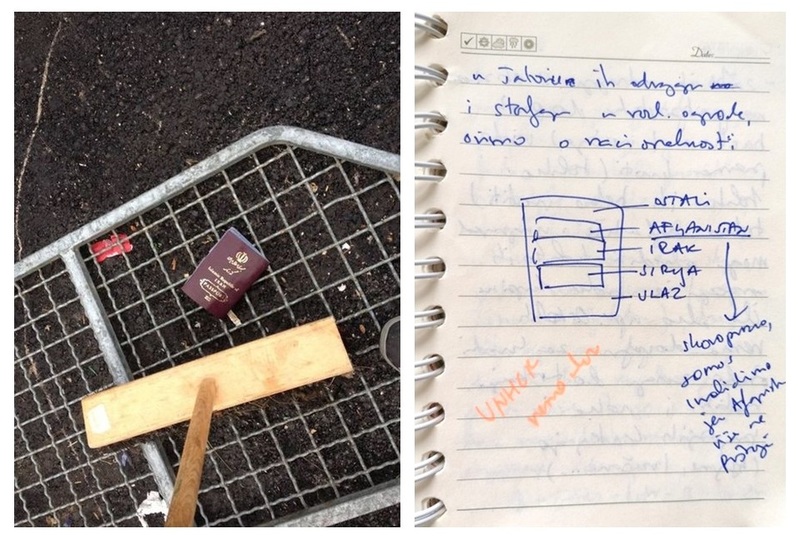SIA
Contemporary technocratic discourses, including those related to the migration or humanitarian industry, are saturated with abbreviations or, more precisely, acronyms, including shorthand for different groups of people – from TA (“tražitelj azila”) for asylum seekers in Croatian to POM for People on the Move in English. In a vein similar to the abbreviation OTM for Other than Mexicans used by the US border police (De León 2015: 109), during the period of the Balkan corridor, the phrase SIA was used in formal and informal communication for citizens of Syria, Iraq and Afghanistan. This abbreviation came into use in November 2015, along with profiling and separating people into those who were allowed to continue their movement through the corridor – primarily citizens of Syria, Iraq and Afghanistan, i.e. SIA – and the rest, who were referred to by the abbreviation “ne-SIA” or “non-SIA”, and who were excluded from the corridor and/or returned to the previous country via the counter-corridor. Over time, profiling in the corridor became more and more rigorous, and the prohibition of further movement gradually affected an increasing number of people, until ultimately, right before the complete closure of the corridor in March 2016, it officially also applied to people from Afghanistan.
The first activist reports on pushbacks in the corridor emphasized that profiling and distinguishing between SIA and non-SIA refugees is contrary to international refugee law, which stipulates that requests for international protection must be considered individually and regardless of the country of origin of asylum seekers. Separating people into those coming from SIA and non-SIA countries in the corridor, on the other hand, created a division into real and fake, legitimate and illegitimate migrants and refugees. Because of this division, some refugees coming from, for example, Iran presented themselves as citizens of Afghanistan in the hope that they would be able to continue their movement along the corridor (cf. mobile commons and appropriation).
The division into SIA and non-SIA was not, as one might expect, primarily based on humanitarian reasons, but instead followed the logic of numbers. The most numerous groups (those coming from Syria, Iraq and Afghanistan) were allowed into the corridor so that the others could be separated more easily and excluded without major disturbance. For instance, refugees from Eritrea, as warned by Bernd Kasparek (2016), were not allowed to pass and apply for international protection, even though the approval rate of their asylum requests in the EU member states was extremely high at that time, exceeding 75% in some of them, which was later recognized also at the level of priority groups of the relocation program, which was activated after the corridor was closed.
After the profiling in the corridor began to be carried out more intensely and by using loaded exclusionary questions, the distinction between SIA and non-SIA in certain transit camps also materialized in a spatial manner. At the end of February 2016, in the reception tent at the Dobova camp, refugees were fenced off according to their country of origin. This practice also had an operational role, since they were referred to the registration procedure following the spatial arrangement in the reception tent. Syrians were the first in line, while “others” came last, and as the number of those registered to continue the journey grew, due to the daily quotas introduced by the countries at that time, registration was increasingly being reduced to a prelude to pushbacks and an effective mechanism for exclusion from corridor. The cruelty of this segregation regime is further underlined by the fact that the smaller tent, for those excluded from further movement, was located next to the large tent, meant for the people who were allowed to continue their journey. Both tents were located right next to the location from which buses carried people designated as SIA further into Europe.

Dobova Camp – on the left: Torn and discarded Iranian passport (7 December 2015, Photo: Mojca Piškor), on the right: Note from the camp (24 February 2016, Author and photo: Marijana Hameršak)
19/12/2022
Literature
De León, Jason. 2015. The Land of Open Graves. Living and Dying on the Migrant Trail. Oakland: University of California Press.